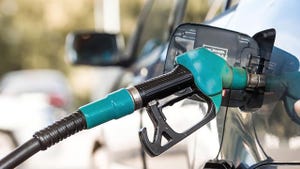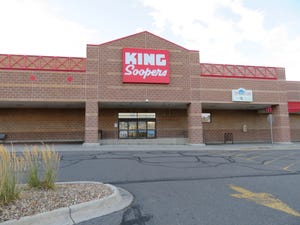Retailers Explore Solar Energy OptionsRetailers Explore Solar Energy Options
Helped by generous state subsidies as well as new financing arrangements, a growing number of food retailers, both large and small, are trying out solar power, which lowers their electric bills while benefiting the environment. There are at three primary ways that supermarkets can acquire solar energy: buy and maintain their own solar panels; pay a fixed rate for 20 or 30 years to a solar services
April 9, 2007
LIZ PARKS
Helped by generous state subsidies as well as new financing arrangements, a growing number of food retailers, both large and small, are trying out solar power, which lowers their electric bills while benefiting the environment.
There are at three primary ways that supermarkets can acquire solar energy: buy and maintain their own solar panels; pay a fixed rate for 20 or 30 years to a solar services company under a Power Purchase Agreement (PPA); or pay via a PPA with an option to buy the system.
According to informed sources, each of the three alternatives is being explored and used by retailers. But which one is the best choice varies according to the circumstances and sizes of individual stores, the incentives available in the states where stores are located, and the financial resources of the owners and their willingness to make large capital investments with paybacks ranging from six to 10 years on average.
Issaquah, Wash.-based Costco currently has two stores with solar roof systems: one in Lancaster, Calif., installed last September, and one in Lake Elsinore, Calif., installed in February.
Costco owns both systems, which have only been live for a few months, and so far “both are performing very well,” said Craig Peal, assistant vice president for energy/building controls for Costco. He said Costco should achieve an acceptable return on investment for the two stores in five to six years.
Mark Culpepper, vice president for Beltsville, Md.-based SunEdison, Costco's solar services provider for the Lake Elsinore store, said the system is expected to supply in excess of 725,000 kilowatt-hours annually over an expected lifespan of 25 years, during which time it should save the store more than $3.8 million in energy expenditures.
In addition, said Culpepper, the clean energy produced by the Lake Elsinore solar system is expected to prevent the release of an estimated 1,009,611 pounds of carbon dioxide annually, which is the equivalent of planting 2,800 acres of trees over the life of the system.
At its Lancaster store, Costco installed a 600-kW solar electric system provided by Billerica, Mass.-based Schott Solar. Peal said that system is also expected to significantly decrease operating costs while “supporting California's efforts to manage its energy requirements.”
Both solar systems, Peal said, are currently handling about 20% of each store's energy load, “but more significantly, during peak demand we may be able to take 30% to 45% off the [electrical] grid, which will reduce the fees we pay at peak times.”
OWN OR RENT?
Peal said that down the road, Costco may try a PPA, which Culpepper described as “one of the newest but fastest-growing ways for a commercial business to gain access to solar power.” Peal said that while Costco generally prefers to own the equipment for its buildings, “you always have to understand your options.”
Gary Gerber, the founder of Berkeley, Calif.-based Sun Light and Power, said that owning a solar system can be feasible, provided retailers can qualify for state incentives and the 30% federal tax credit, which is scheduled to expire at the end of 2008.
“The trend is toward PPAs at this point,” said Gerber. “But while the federal tax credit is still available, it can make sense for retailers to own their solar systems.”
Steve Castracane, energy manager for Carteret, N.J.-based Pathmark, said the chain's three solar installations, which Pathmark owns, were subsidized “to a significant degree” by New Jersey's Clean Energy Program. One of Pathmark's installations went live this month; the other two should be live by summer.
In addition to New Jersey's subsidies, Pathmark leveraged federal tax credits and rebates from utility companies to cover a significant portion of the cost of installation, Castracane said, adding that Pathmark could see a payback in five years or less. “Putting those panels on those three stores,” he noted, “will certainly work for us.”
Pathmark is now in the process of “evaluating other possible locations,” said Director of Public Affairs Rich Savner.
Waitsfield, Vt.-based Northern Power, which installed Pathmark's solar systems, is considering offering retailers the option to purchase solar energy in the future through a PPA, “eliminating the need to make large up-front capital investments,” said Kevin McCollister, project manager for Northern Power.
SMALL OPERATORS, TOO
The availability of generous tax incentives, credits and rebates, particularly in California and New Jersey, has also made it possible for small businesses such as Berkeley, Calif.-based Natural Grocery to install solar energy systems. Natural Grocery chose Sun Light & Power as its general contractor.
Natural Grocery installed a solar energy system in its El Cerrito, Calif., store in November 2005. “We have two stores, and we would have liked to do it in both stores,” said Bob Gerner, general manager. “But our roof in Berkeley can't cooperate.”
With a $100,000 rebate from California, it cost Natural Grocery a net of $150,000 to install its solar system. The system handles between 20% and 25% of the store's refrigeration needs. From November 2005 to March 27, the system saved the store $36,215 worth of energy, said Gerner.
By June, Gerner hopes to display a computer monitor on the El Cerrito store's sales floor to show customers how much energy the system is saving daily. “We're a green business,” said Gerner, “and we felt this was something our customers would be happy to see us do. We also felt that a long-term payback of about six to eight years made the investment worthwhile financially.”
Wholesalers are also getting into the act.
In Sacramento, Calif., Tony's Fine Foods, a supplier of perishable goods to supermarket retailers, was able to qualify for tax incentives that cut the net cost of a 1-megawatt, 120,000-square-foot solar installation from $7 million to $3.5 million.
Co-owner Scott Berger said Tony's implemented the system last June and expects to get an ROI in about six years. “Without the incentives from the California Energy Commission and the lump sum rebate from the Pacific Gas & Energy Co., we could not have done this,” he noted. “The cost would have gone from about a six-year payback to at least 15.”
So far, the system is “performing better than expected,” said Berger. “We expect annual energy cost savings of between 40% and 45%.” He estimated that since June 2006, Tony's Fine Foods has avoided adding 852,000 pounds of carbon dioxide to the atmosphere.
Supermarket retailers typically favor investments that pay back in two years or less, so owning a system that pays back in five to 10 years may not always look very attractive.
On the other hand, “a solar panel system is good for about 25 to 30 years, so if it takes you seven years to pay off, you've gotten a good return on your investment just from everything you save for the rest of those years,” said Ray Hoyt, president of solar consulting firm Rakar Industries, Danville, Calif. “Plus you are doing something that is good for the earth and good for your community.”
About the Author
You May Also Like




